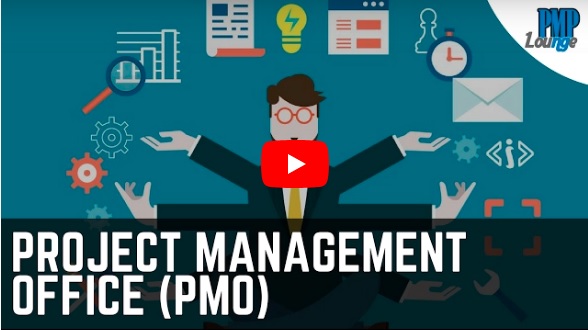The Project Management Office Business Model Dilemma Part 2

Aligning your PMO has two related areas:
- Aligning Your PMO Mission With Your Business Units’ Missions.
- Aligning Your People With Your Business Units’ Missions.
See Part 1 for why we are discussing this.
Aligning Your People with Your Business Units’ Missions
The solution to this one is relatively simple to describe and rather harder to implement. If you buy into the notion that your PMO serves the business units, you can map your compensation package and recognition to equivalent staff in the BU’s.
Ideally, your BU’s would pay for the PM’s they use including an overhead charge to pay their share of a Director’s and one assistant’s salaries, subscriptions, tools, and anything else related to the PMO. If that is not going to happen you can at least work with the BU’s to align compensation with their people who have equivalent work, responsibilities, or level.
When you meet with each BU leader, find their explicit goals and their personal and perhaps not documented goals. Then work with them to set your PMs’ performance evaluation criteria to meet their needs. Make sure they know they have strong influence and can adapt the goals as needed, perhaps quarterly, to keep pace with rapidly changing business conditions and as everyone learns what the right mix of goals are.
Your PM’s goals should be the BU’s goals, not some peripheral goals like tool adoption, governance, or other oversight type of stipulations. Don’t dilute their loyalties by trying to have them become the methodology, tool, or process police. See below for how to accomplish those side goals. Your PM’s should specialize, but not to an over extent, in the BU business functions that they support.
Aligning Your PMO Mission with Your Business Units’ Missions
To align your PMO to your Business Units a few things must happen:
- Your executives MUST assume responsibility to give directives.
- You must align your PMO mission with your business units missions.
- You must make good methodology choices.
Executives Must Assume Responsibility to give Directives
Here is the real core of the matter: There are three overlapping reasons why PMO’s fail to deliver on all the promise.
- Execs sponsor their PMO formation, then almost immediately start telling the PMO to make the Business Units they serve create new deliverables, “comply” with more stringent methodologies, and be subject to a higher level of scrutiny once the PMO reporting sets in. This is the kiss of death. Execs have, perhaps without meaning to, created another layer of management and bureaucracy that has some sort of vague and variable power over the BU’s.
- The BU’s make money or, in case of services, provide valuable services to the end customer, but the PMO seldom does. So the BU’s really hold the power. Starting a few weeks or months after PMO creation, BU’s will start ignoring or giving lip service to PMO edicts.
- PMO leaders then take the heat for BU people not abiding by PMO rules, edicts, and status reporting deadlines. The PMO really only has two kinds of power: referred power from the Execs who charter them, and expert or persuasive power. PMO’s work much better on expert and persuasion than referred power.
How to Align Your PMO Mission with Your Business Units’ Missions
There are four aspects of aligning your PMO Mission with your BUs’ Missions.
- Execs have to give directives to the BU’s that report to them, not to the PMO to forward.
- Execs have to get real about what a PMO should and should not do. For instance, a PMO should not:
- Be a channel for Exec directives to BU’s.
- Create, by itself, any process, template, or anything else that a BU is then supposed to use.
- Tattle, by way of forcing data gathering and reporting for Execs to use to pound on BU projects and their people.
- Create a hierarchy of people who do not directly work on BU projects.
- Charter any Process Improvement Projects that are not directly sponsored by one or more BU’s.
- PMO success should be tied to BU success, not to some process counting, or anything other than BU success.
- The “Ruling Council,” Board, or other name for those that control the PMO should be comprised of BU Execs and staff.
Methodology Choices
- Onsite PMO experts to take control of your PMO (Fastest, most Political).
- Onsite PMO experts to mentor your management implementing best practices.
- Onsite review then periodic visits to jumpstart and mentor one at a time changes.
- Onsite review then remote participation to jumpstart and mentor one at a time changes.
Want Help Planning and Implementing PMO Improvement? Call us to have the DA&R PMOgre™ Team assess and come to you to quickly set up and implement the PMO Roadmap that is right for you. Let us execute on your goals using our PMOgre™ methodology. Contact us at DARaynor@DataAnalysis.com for help or just to talk over your situation.
Conclusion
Be careful when forming an organization that thinks it should be ongoing to solve a specific problem. Perhaps a temporary, dare I say Project, should be formed to address the problem and disbanded when solved.
If you already have a PMO, then don’t worry, you can still salvage productivity. You will just need to reorganize it toward a more effective Business Model.
Most of all, do NOT have your PMO be the methodology, compliance, policy, or any other type of police.
Your PMO should be a trusted partner in helping business units reach their goals, not be viewed as impediments or any other sort of hurdle to be overcome.
What Should Leaders Do to Modify Their PMO’s to be more productive? – Your Thoughts?
Good luck and keep your eye out for ways to drive your PMO forward!
Your path to business success.

